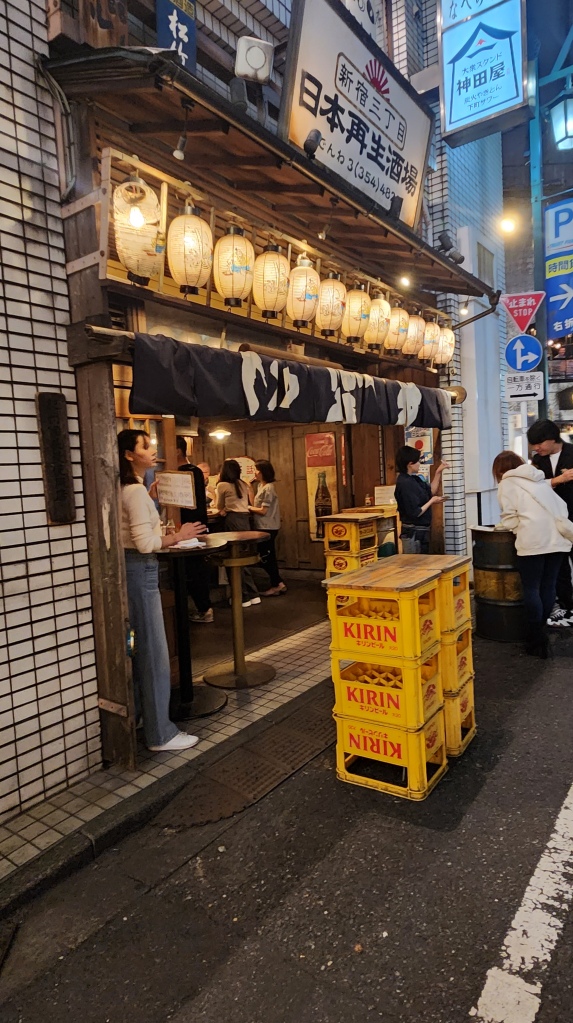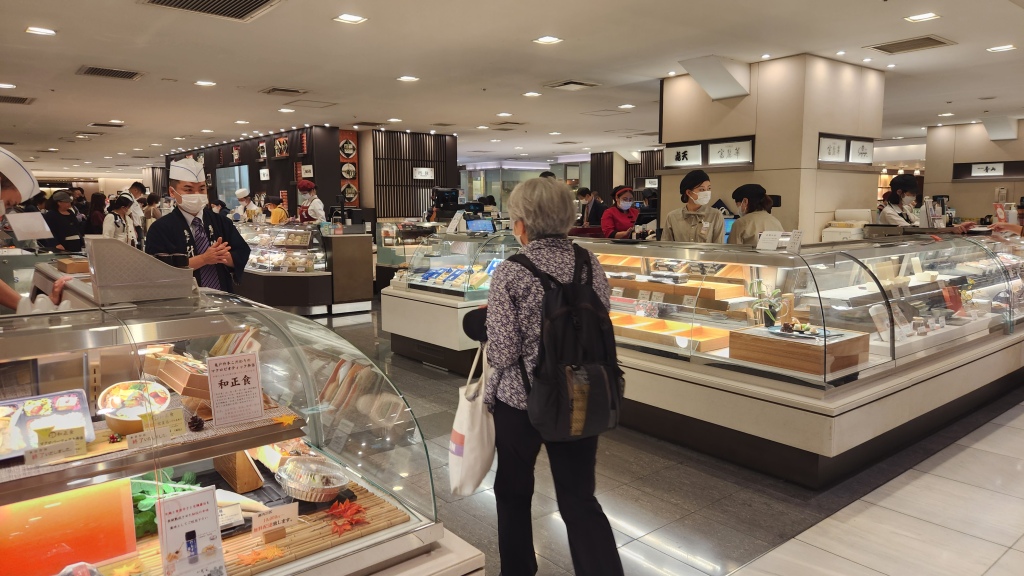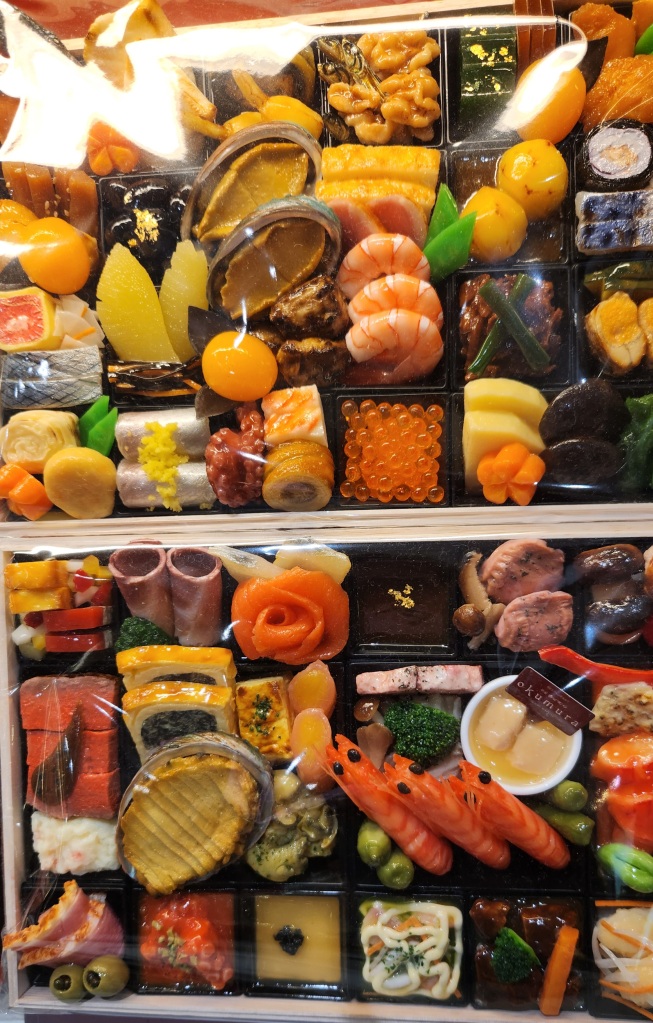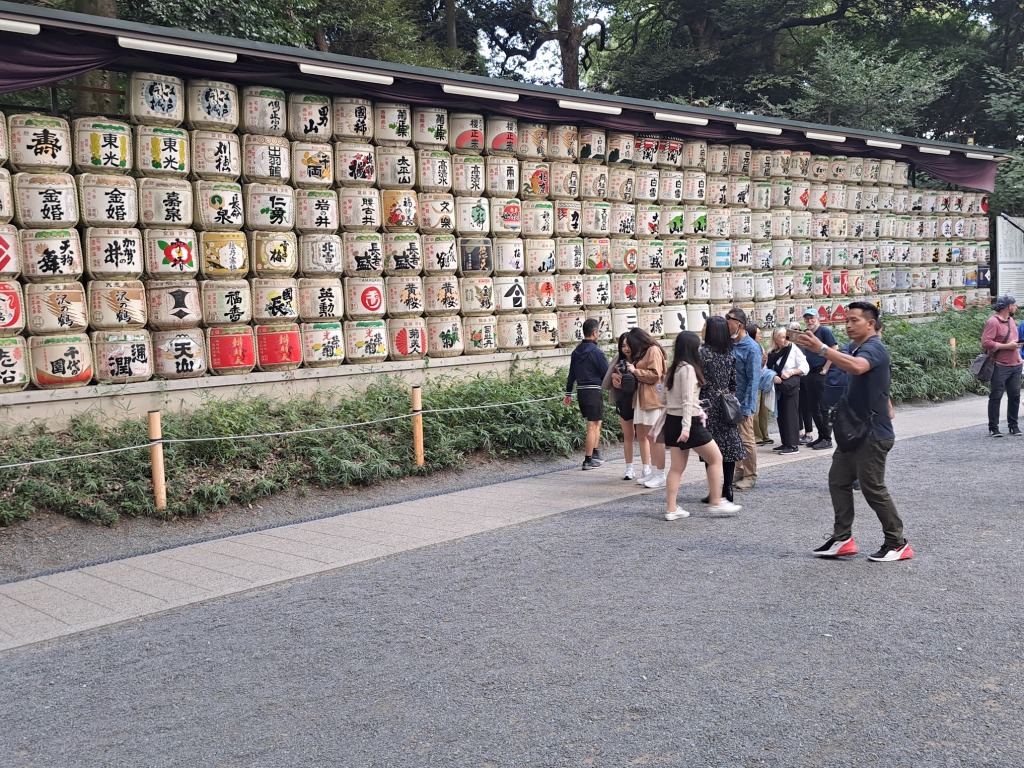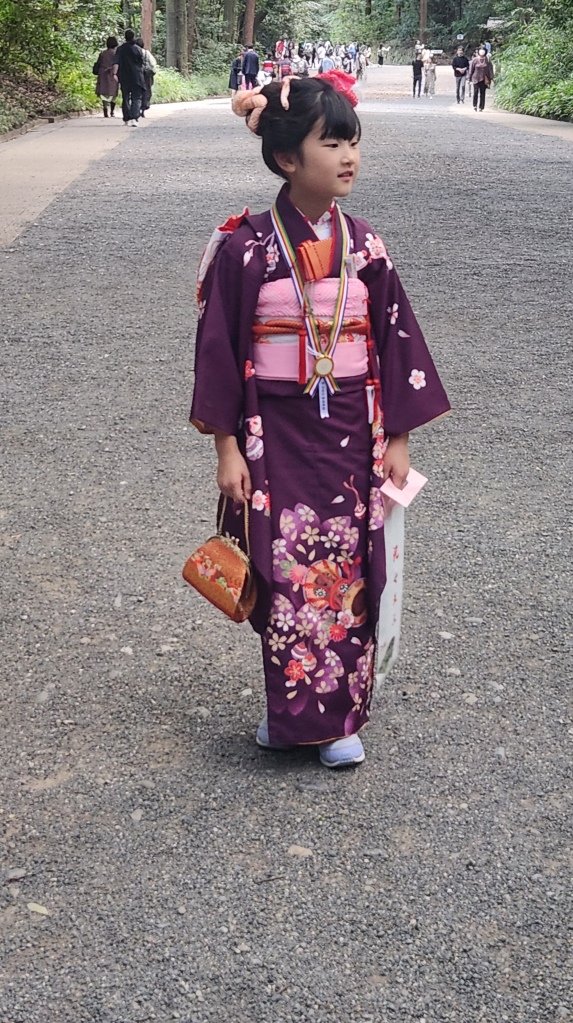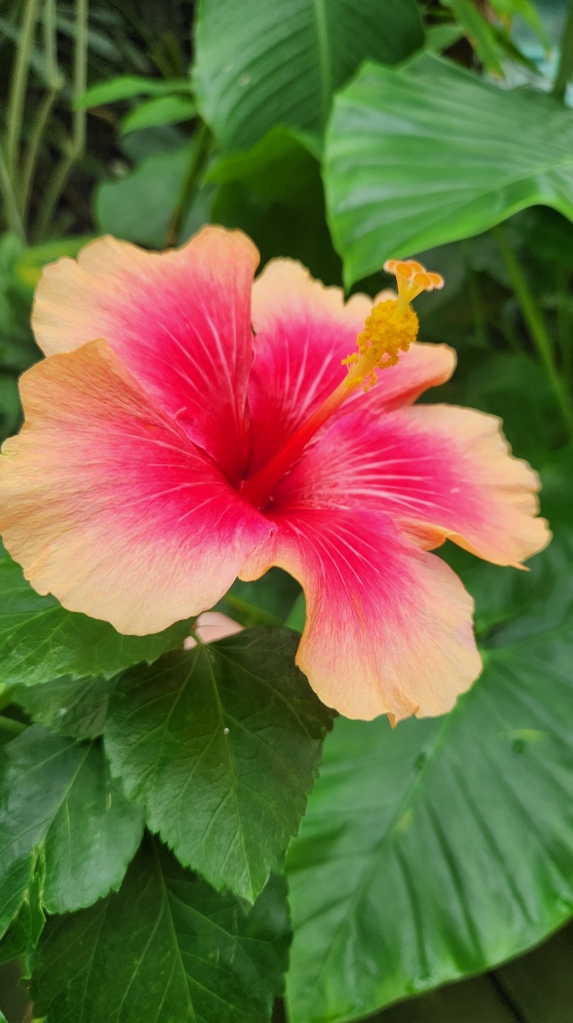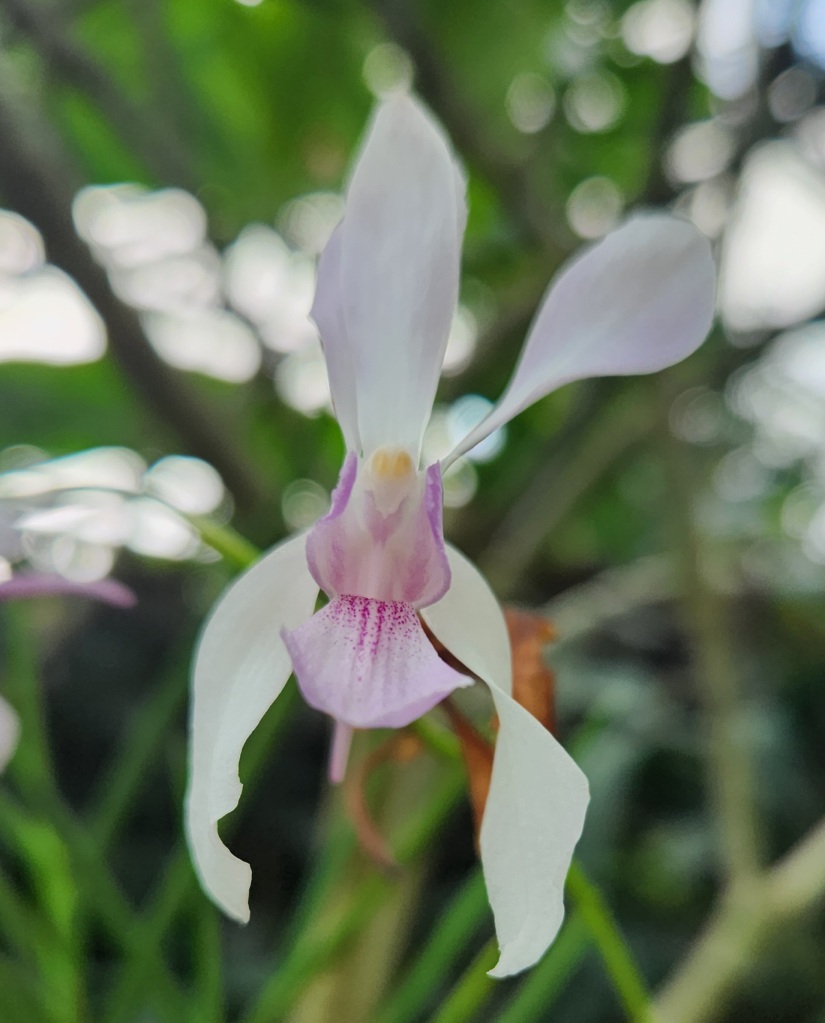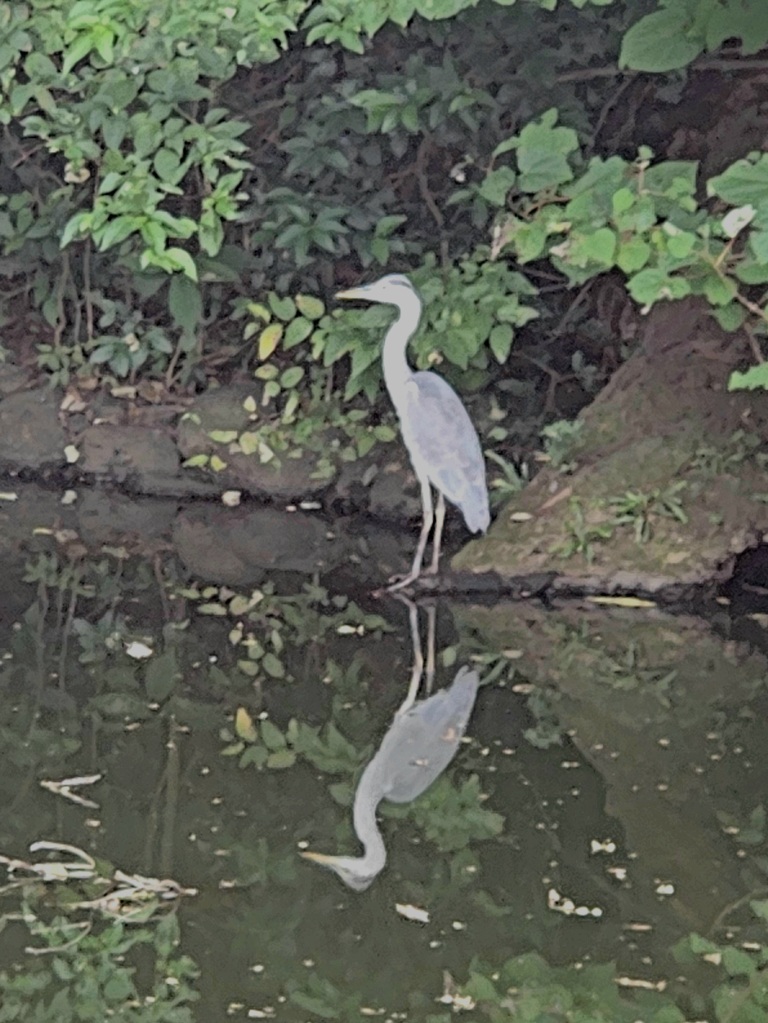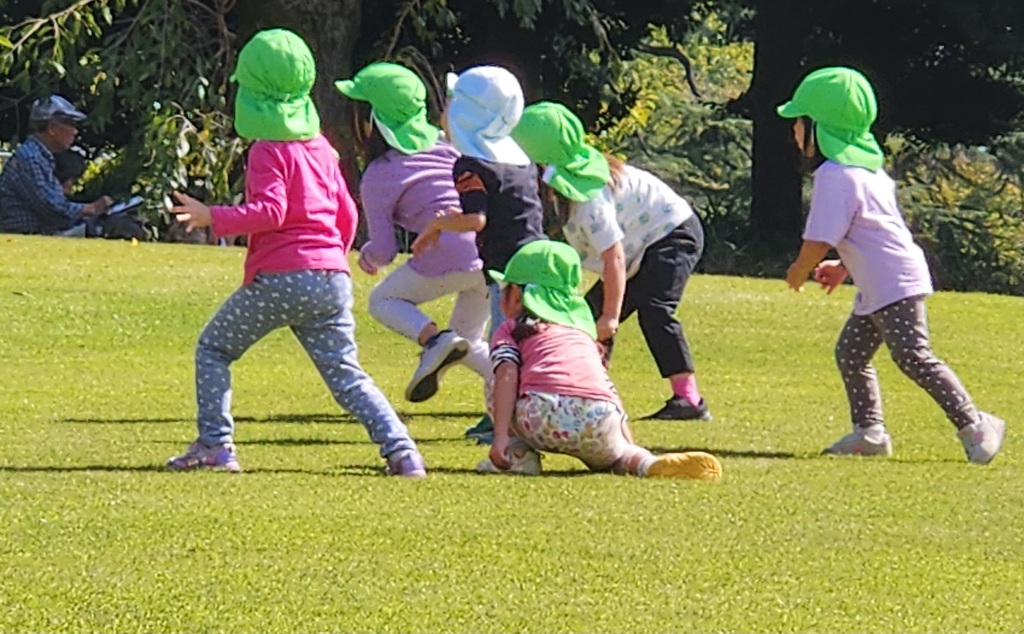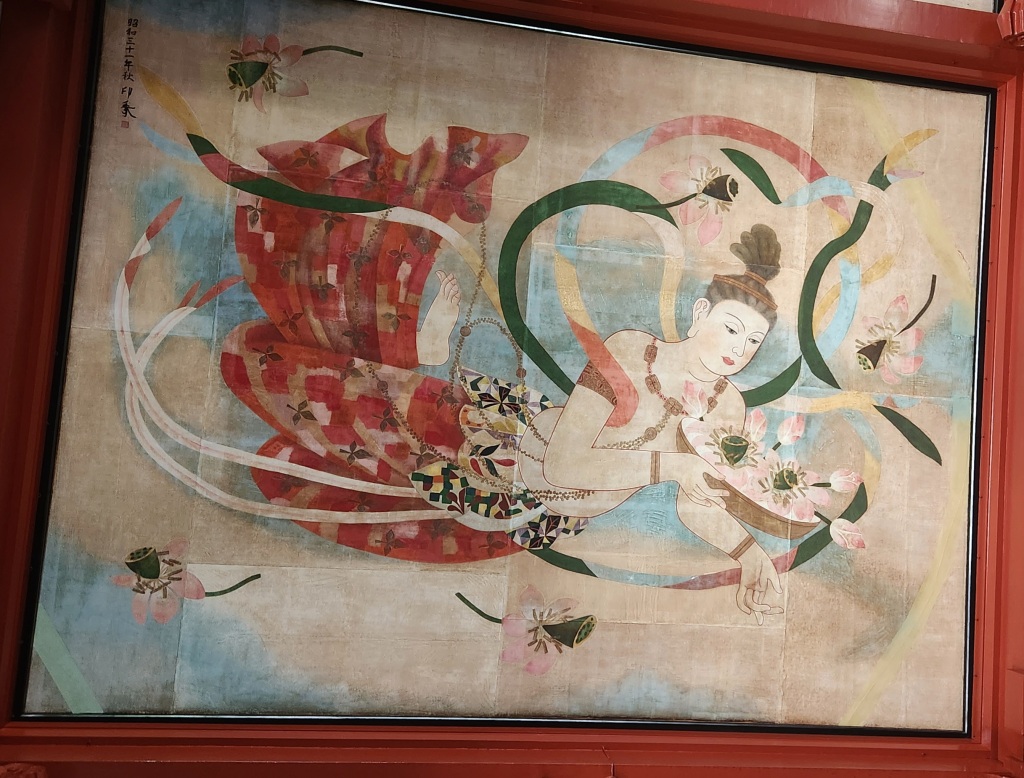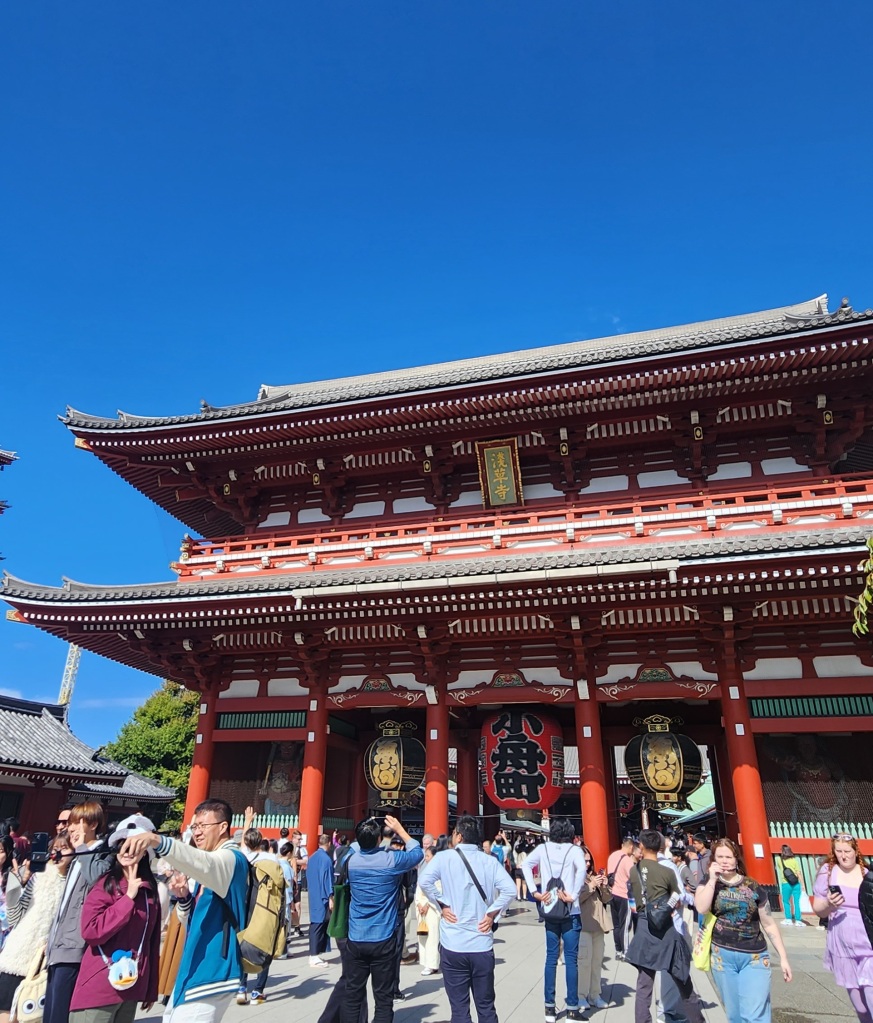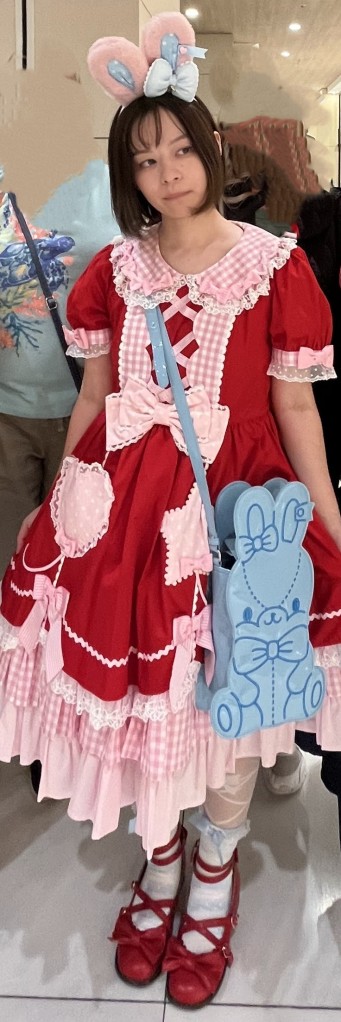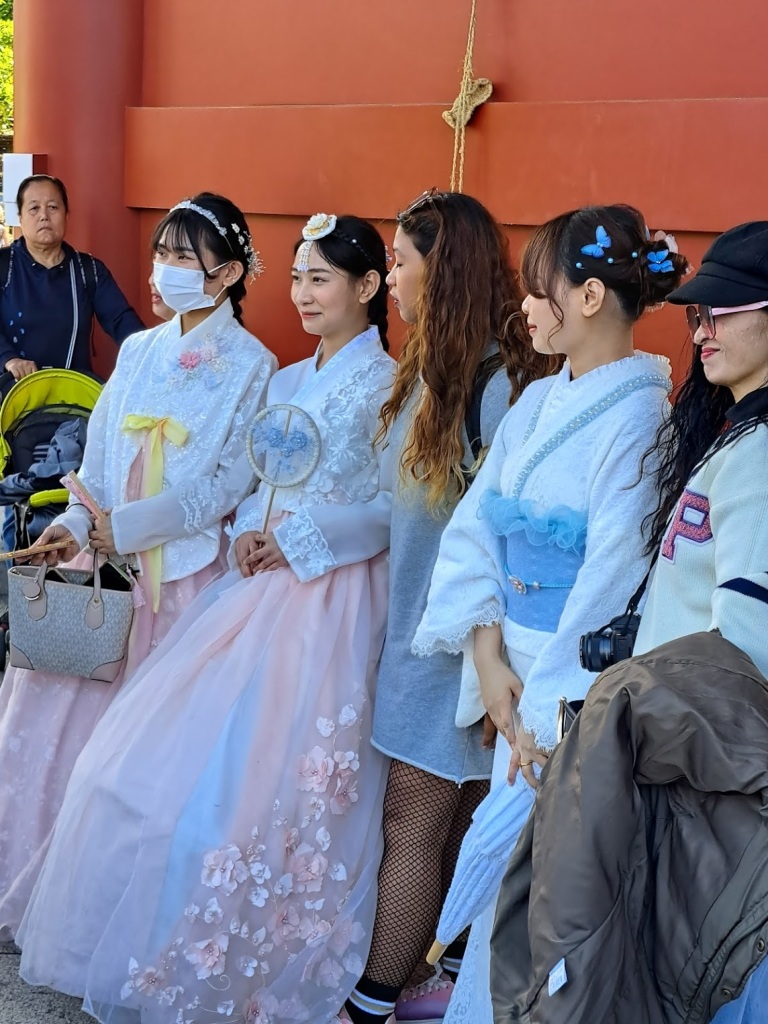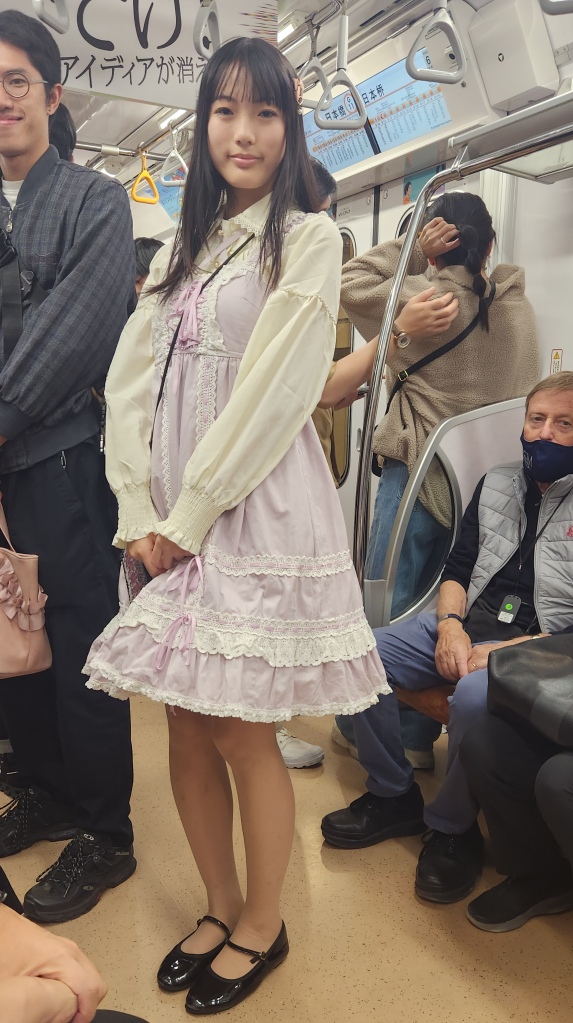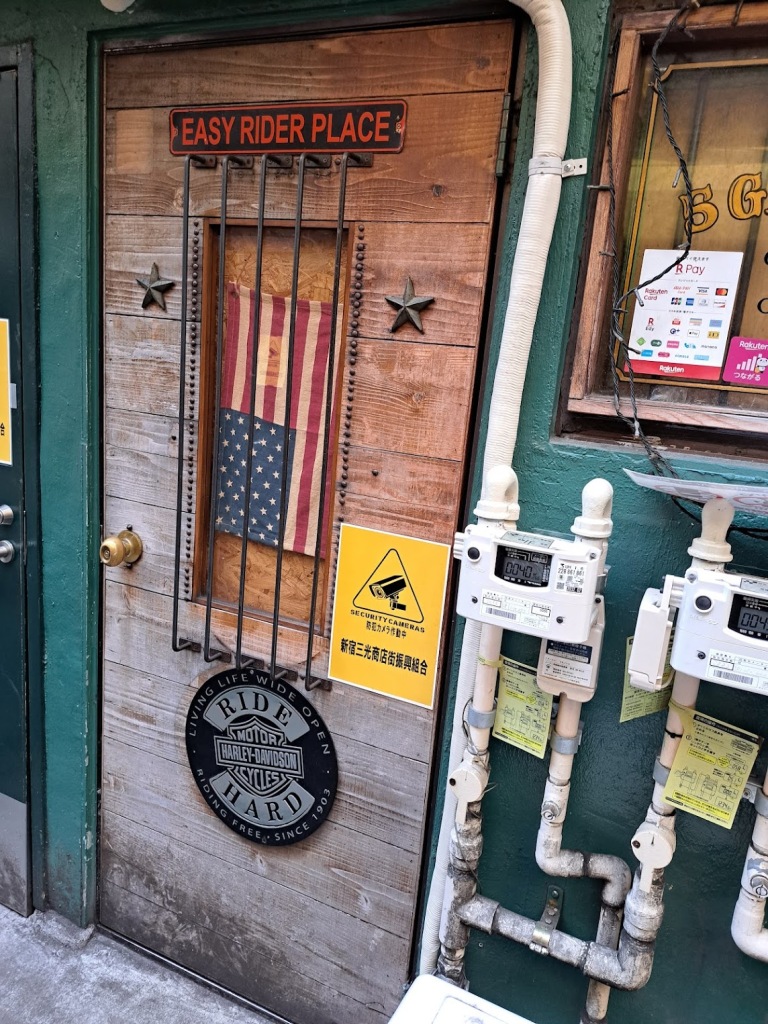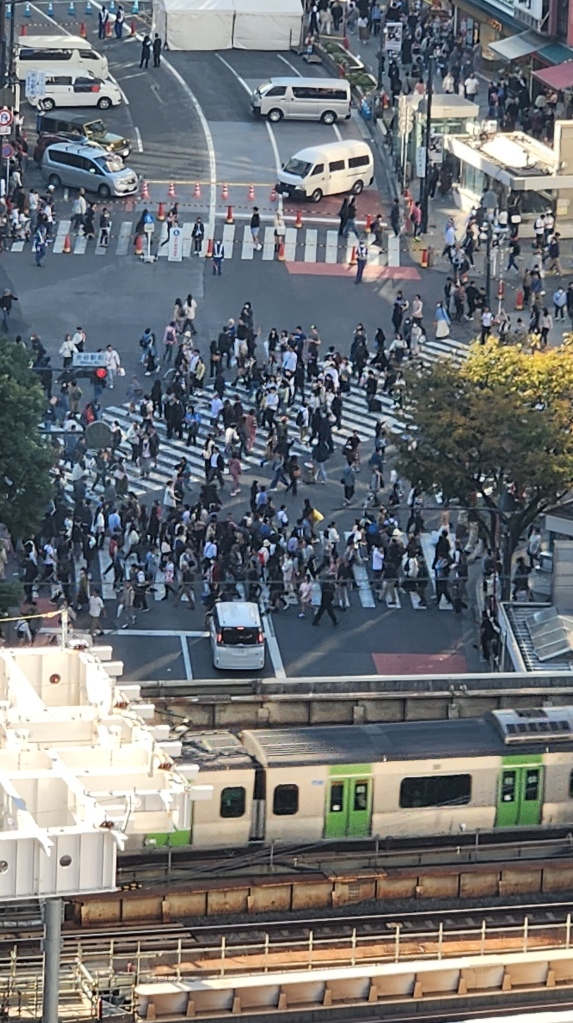This ancient city was once the capital of Japan ( 794AD-1868). The name literally translates into “Capital City”. FYI–the current capital ( Tokyo) means “East Capital” and has the same letters arranged differently. Kyoto has over 17 UNESCO World Heritage sites and over 2,000 temples or shrines. There’s much to see and do. Part 2 will follow this post in a few days.
I loved exploring this city. It’s a combination of ultra modern to the opposite– ancient and steeped in tradition.
ARASHIYAMA BAMBOO GROVE:
If you want any chance of photography here—go as early as possible! We went in the morning, but it was still crowded and hard to get clear shots. The forest is mezmerizing in it’s repitition. Sunlight somehow looks more golden. There’s an aura of security and protection.
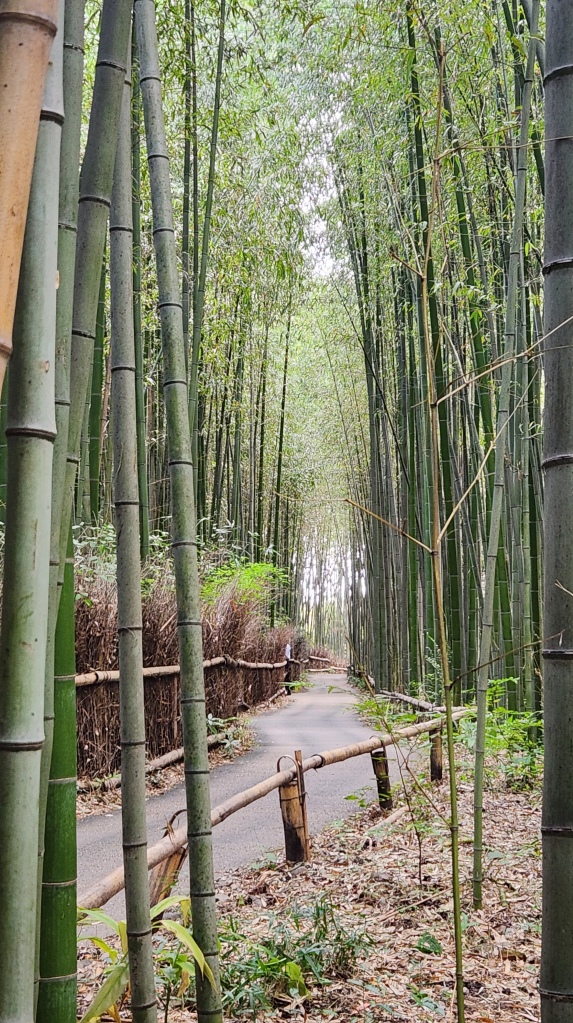
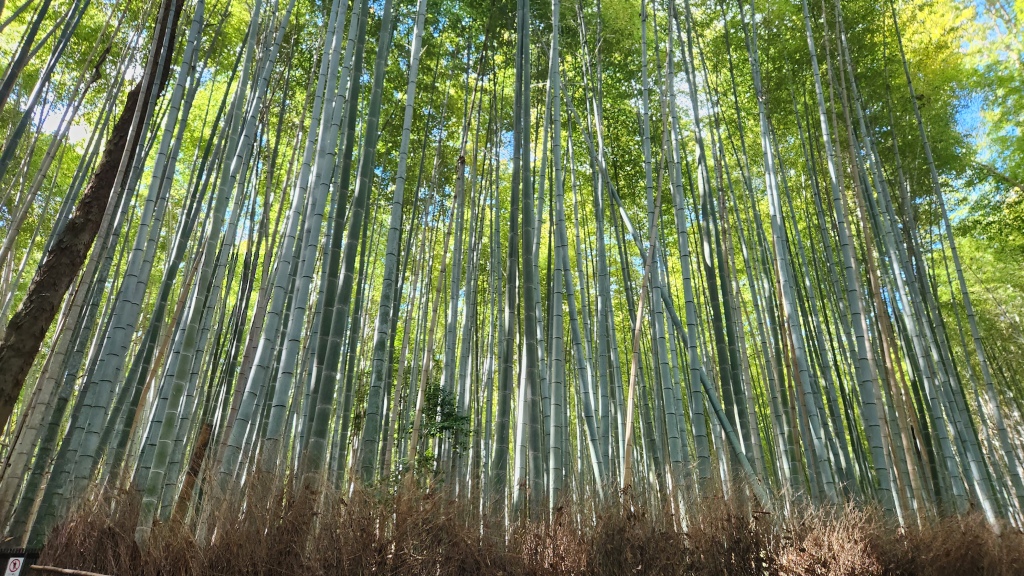
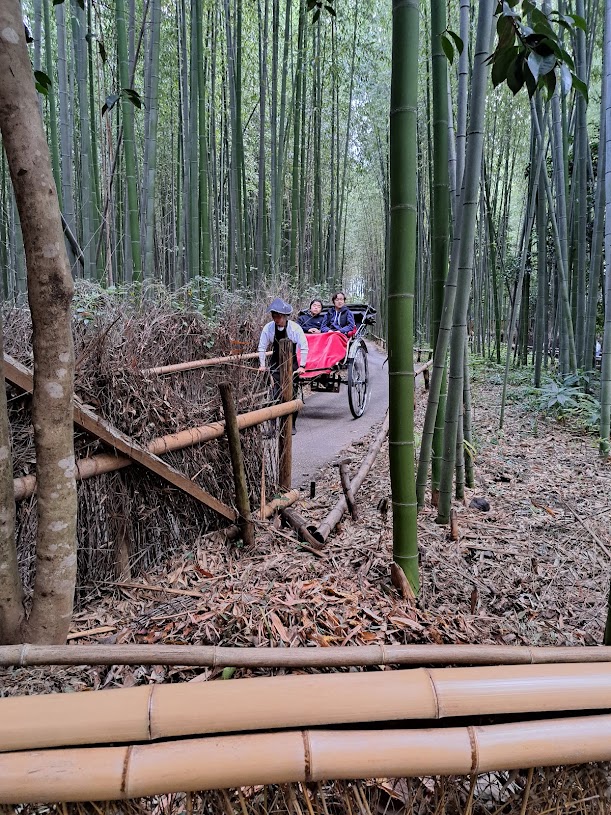
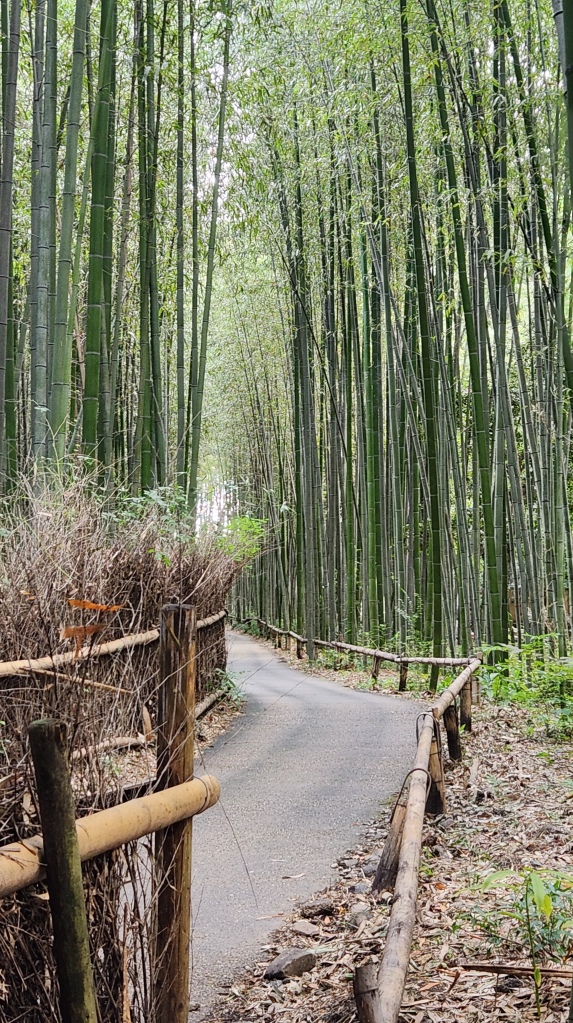
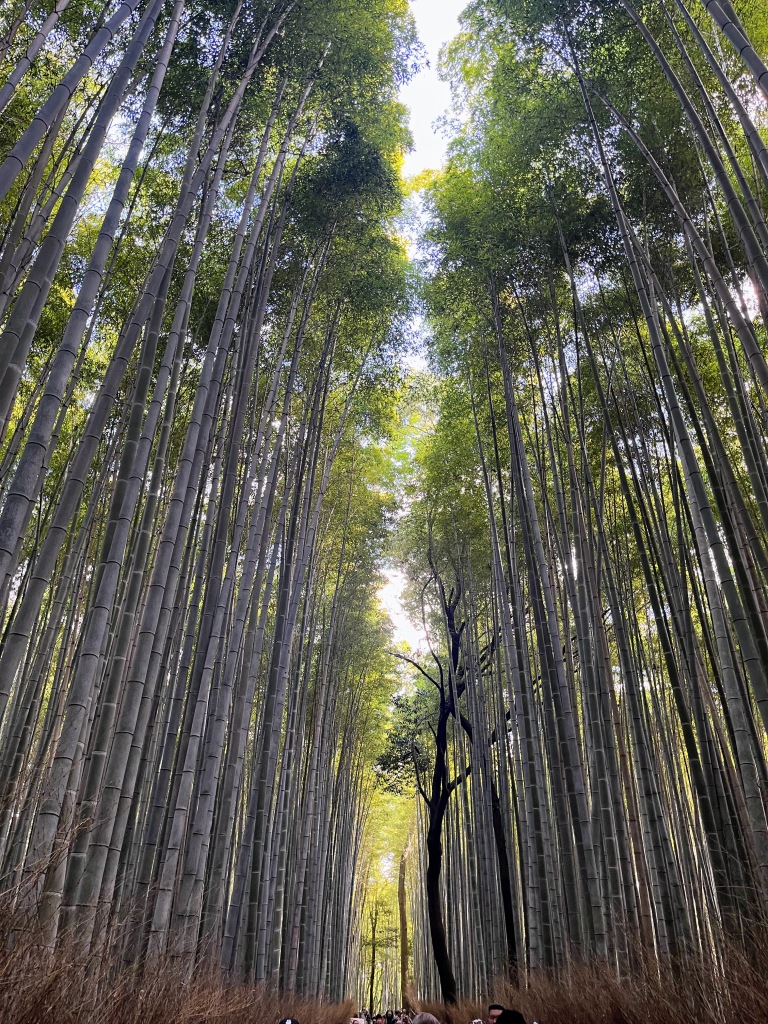
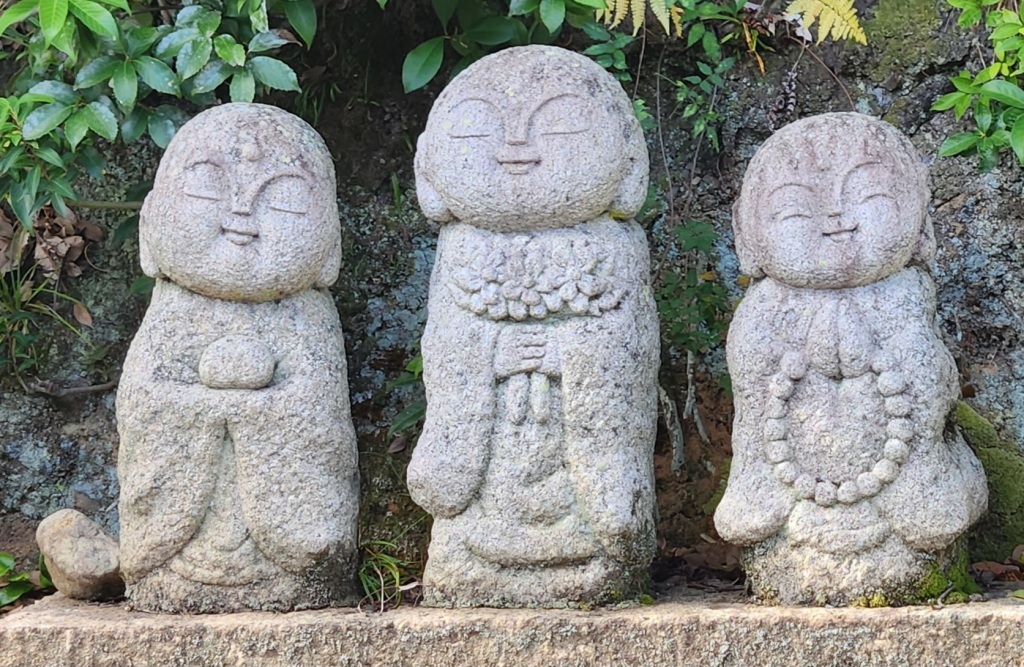
Tenryu-ji Temple
This World Cultural Heritage site is the Zen Buddhist temple of the heavenly dragon. It is the lead temple built in 1339 by Shogun Ashikaga Takauji in Emperor Go-Daigo’s ( 1288-1339) memory. In the 13th century, Emperor Kaeyana built a villa on the property and this is where his grandson, Go-Daigo, was raised and educated. After Go passed away, the villa became a zen temple. A total of 8 fires caused destruction over the centuries, so most of the buildings date to the Meiji period (1868-1912). Note that the landscape garden is one of the oldest in Japan dating to the 14th century! Blows my mind how old these gardens are.
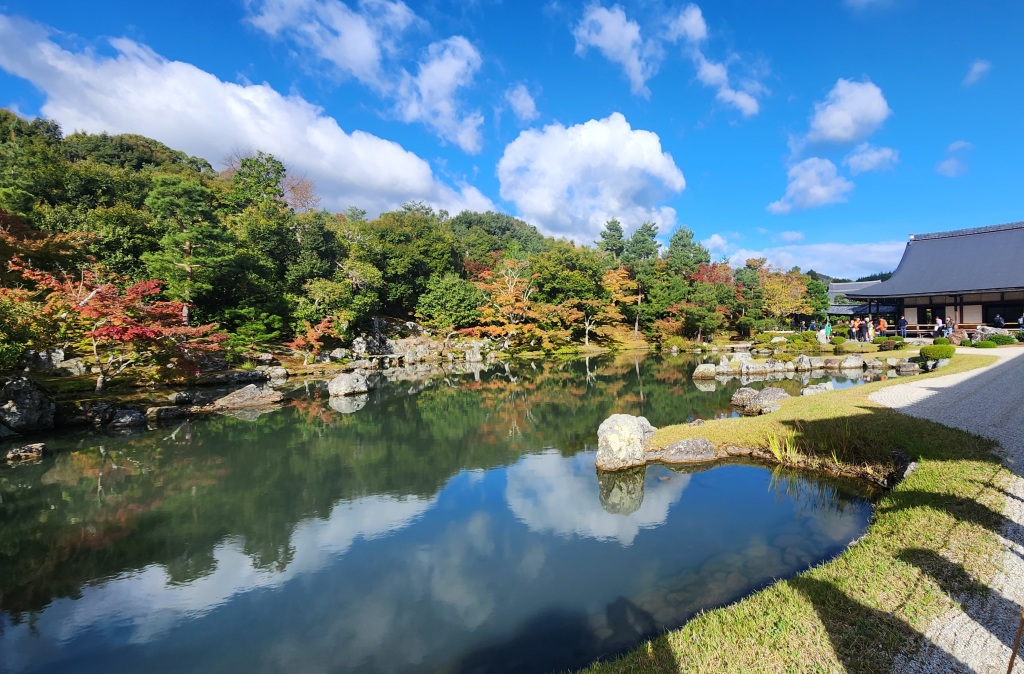
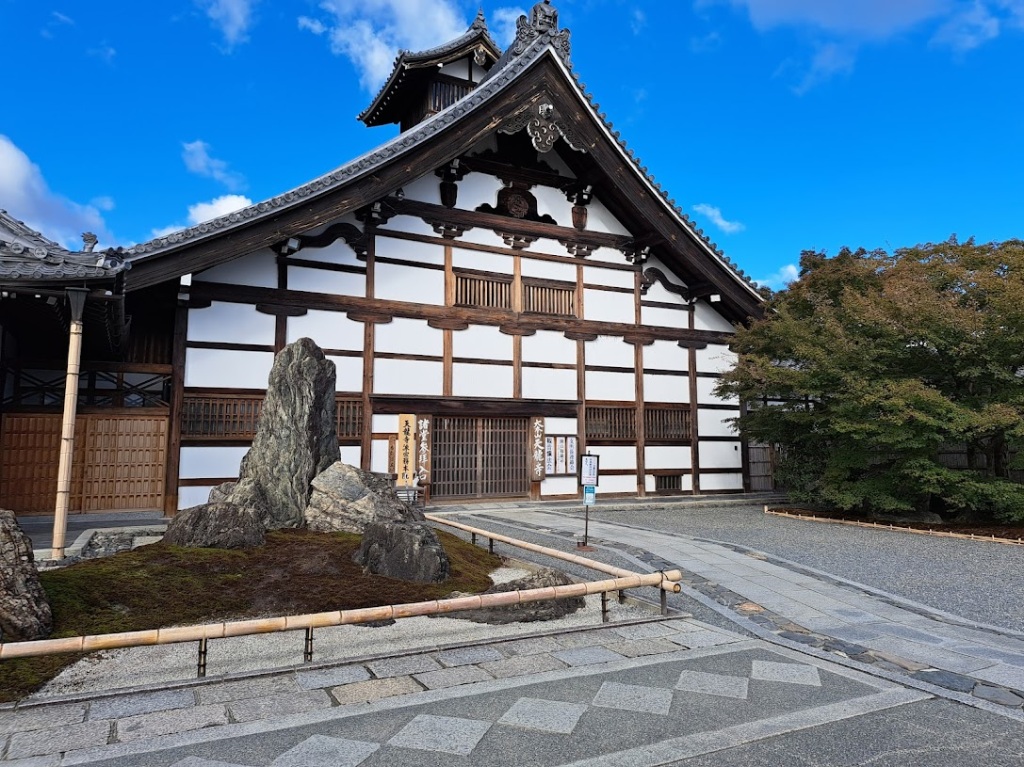
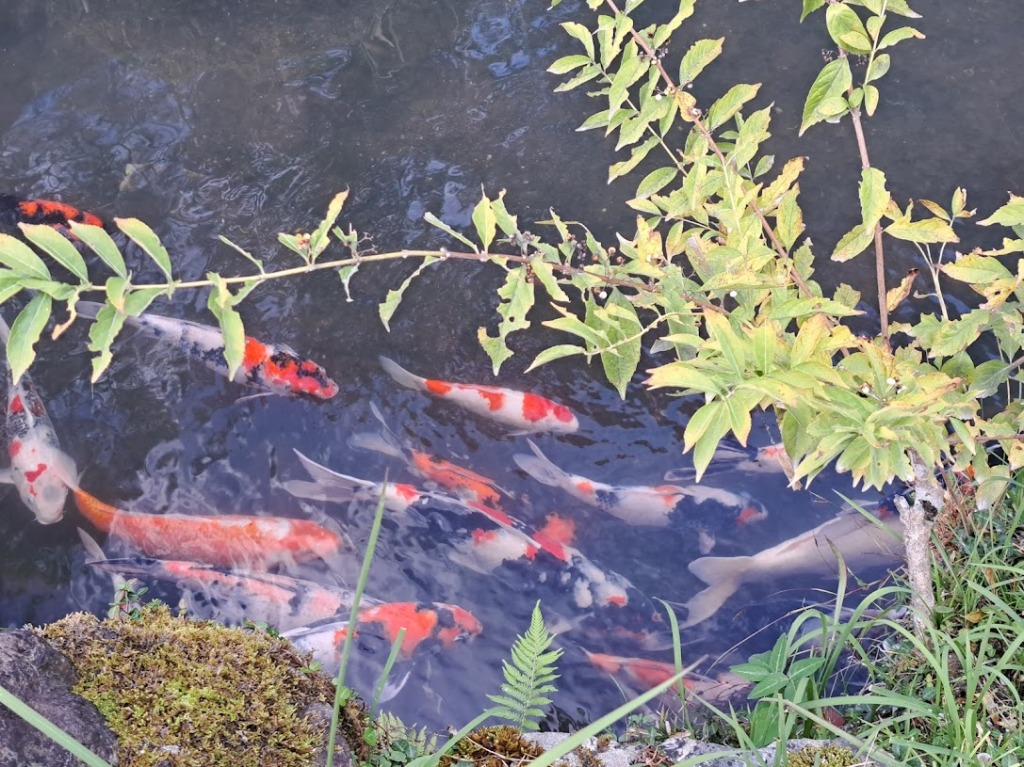
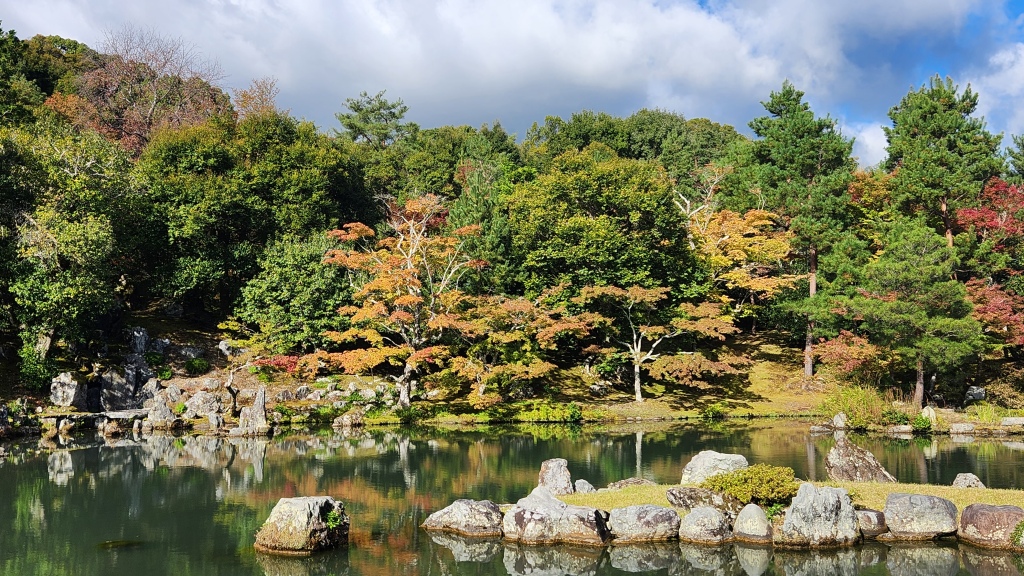
Kinkakuji–The Golden Temple
What’s not to love about a shiny gold-leafed Zen Buddhist Temple? As usual in Japan, this didn’t start out as a temple, but once was a retirement villa dating from 1397 for the third Shogun of the Ashikaga Shogunate. In 1950, a mentally unstable monk burned the place down and it was rebuilt in 1955. Renovations were done in 1987 with gold-leaf applied 5 times thicker. On the top is a golden phoenix named Fenghuang– a mythical creature that reigns over other birds. Mezmerized, I turned in circles, surrounded by beauty. Sadly, the building is not open to the public but the gardens, royal teahouse carved into rock and the temple are worth it.
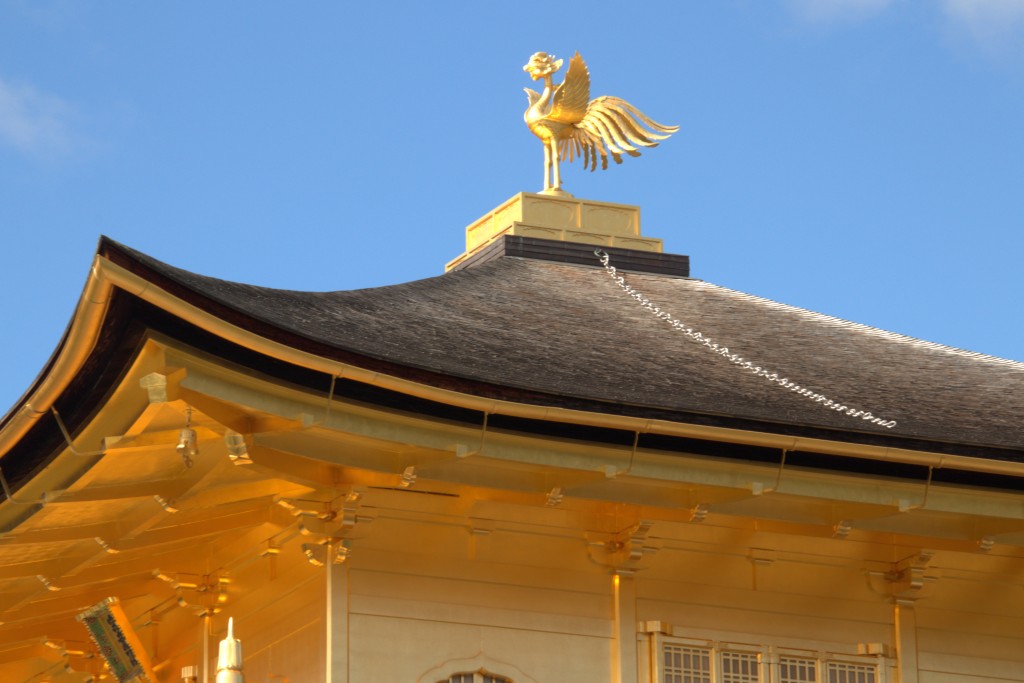
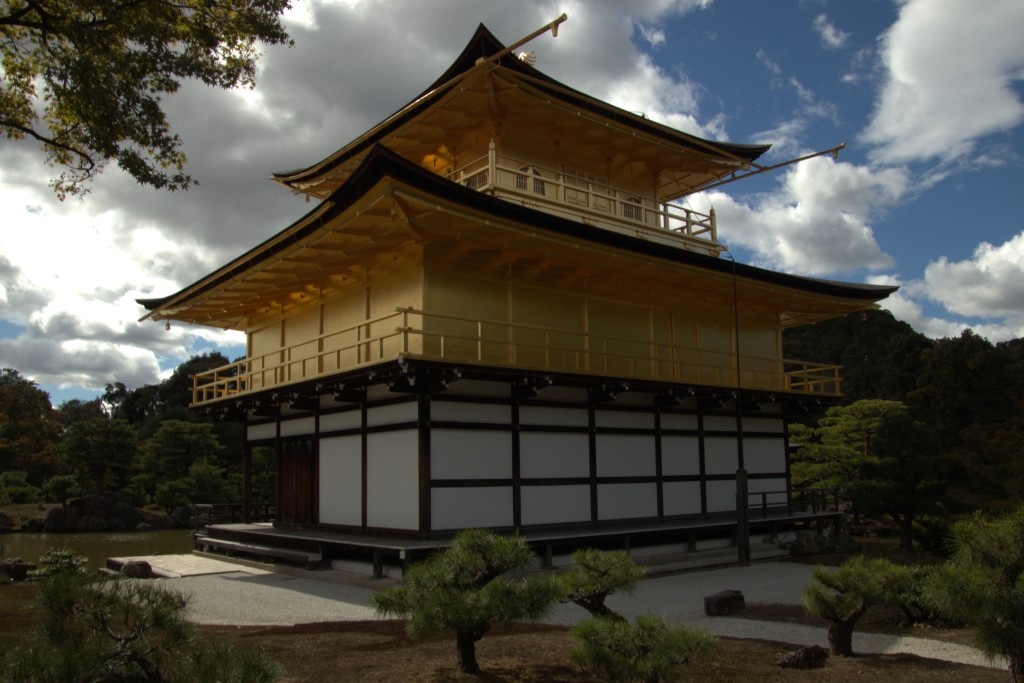

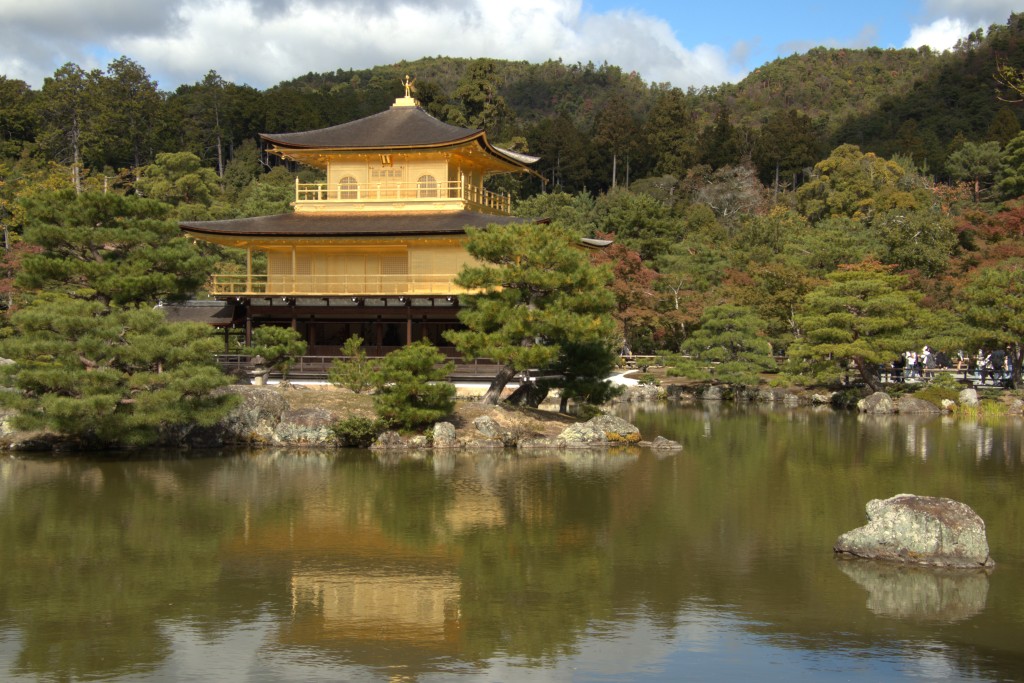
Senkoji Temple
Cross the Togetsu bridge over the Oi River, turn right and hire a hand poled boat to 400 year-old Senkoji Temple that was built as a prayer hall for Emperor Go-Saga. In 1959. a Typhoon damaged the temple, but through hard work, it was repaired. Climb uphill approximately 200 steps for an intimate visit with the charming Zen monk who lives there. Near the top is a large bell that announces your arrival, wind up a few more curves to the small temple and delight in the beautiful view overlooking the valley below. We entered and sat on benches for a class in the history of Zen and the Thousand Arms Kannon, breathing techniques and meditation. Chanting prayers swirled around the room as the drum beat echoed in my chest. Afterwards, we shared in a tea ceremony and enjoyed the views.
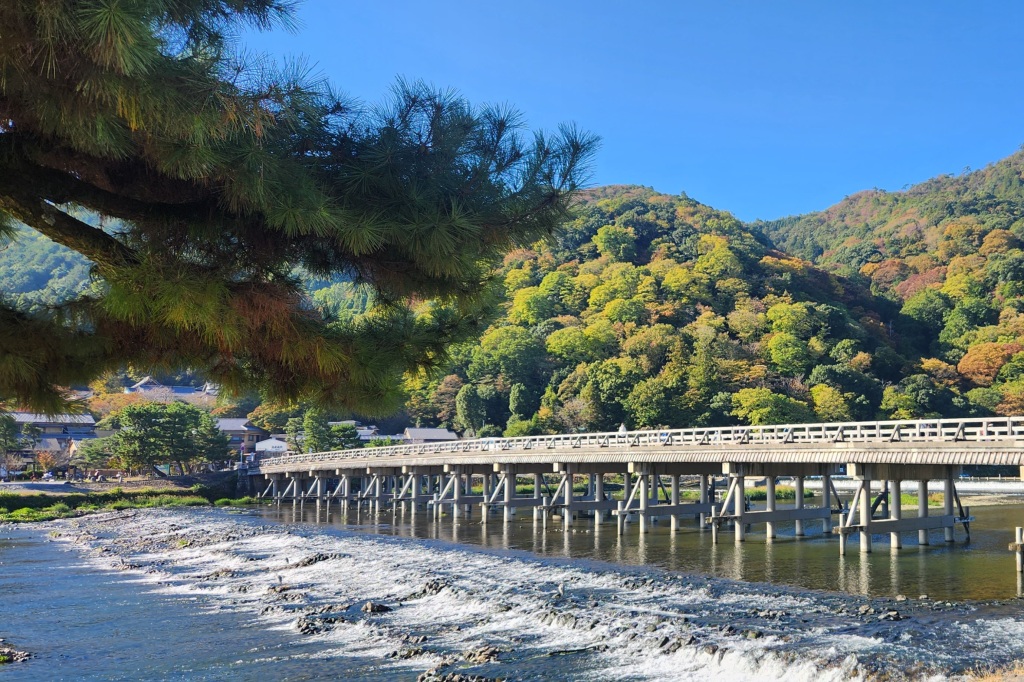
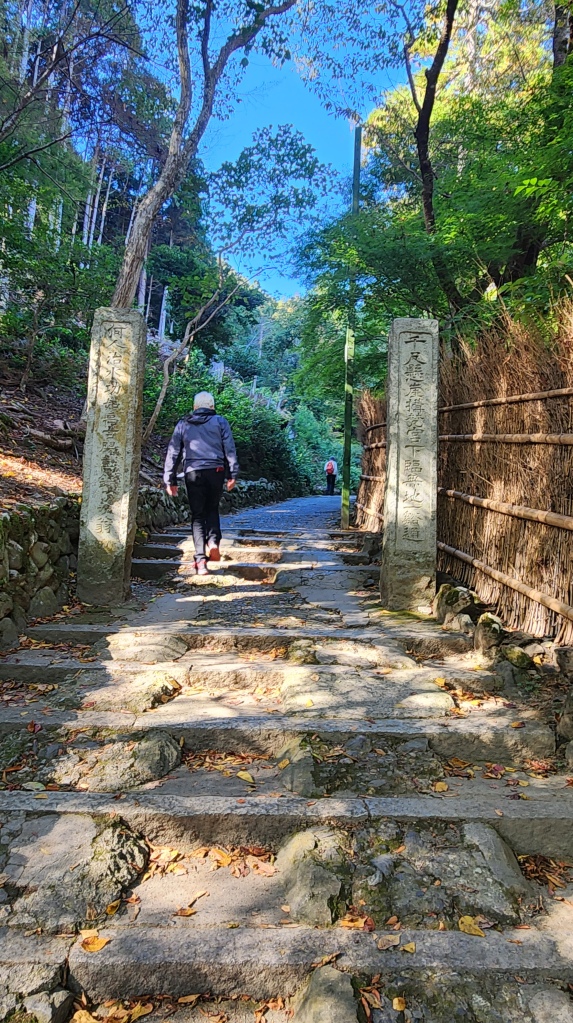

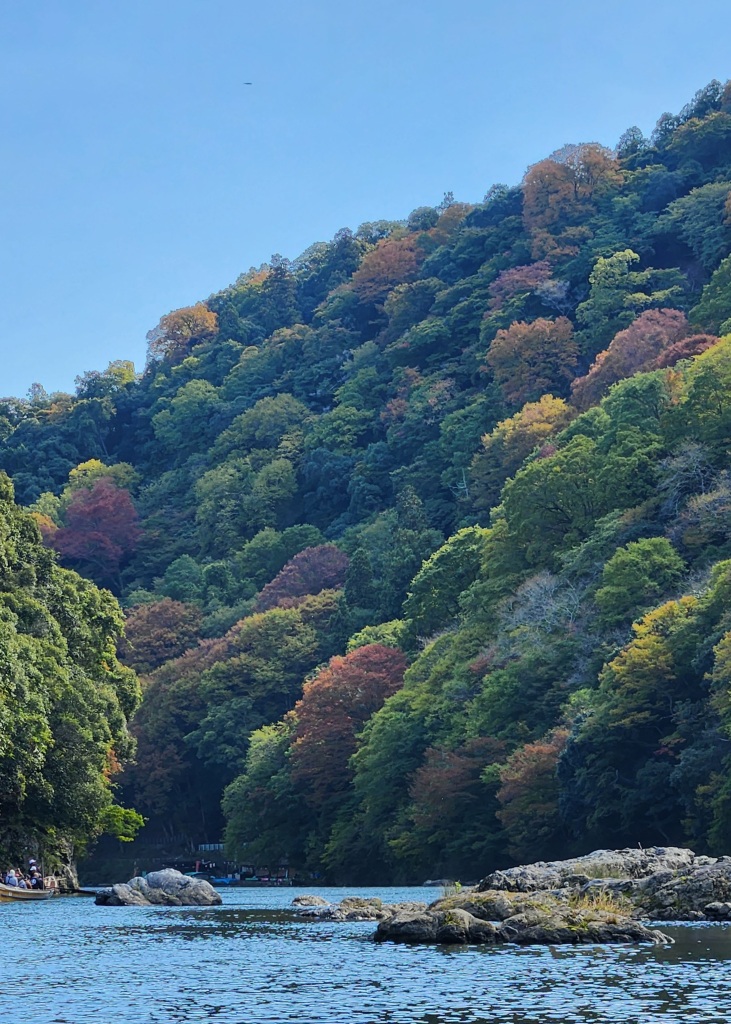
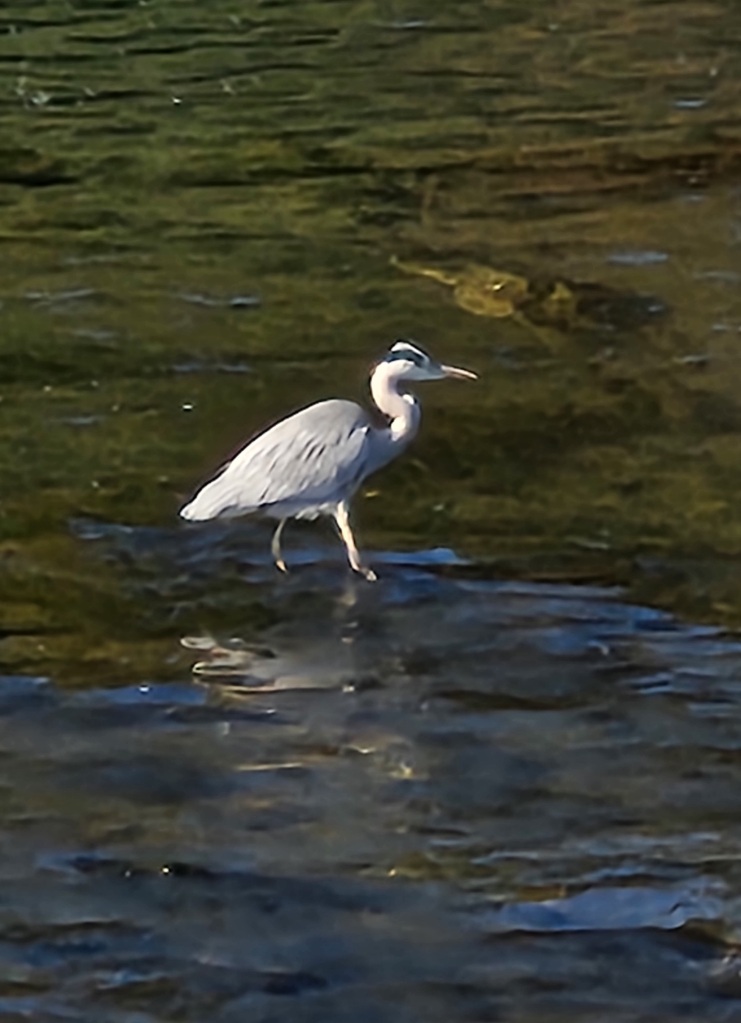
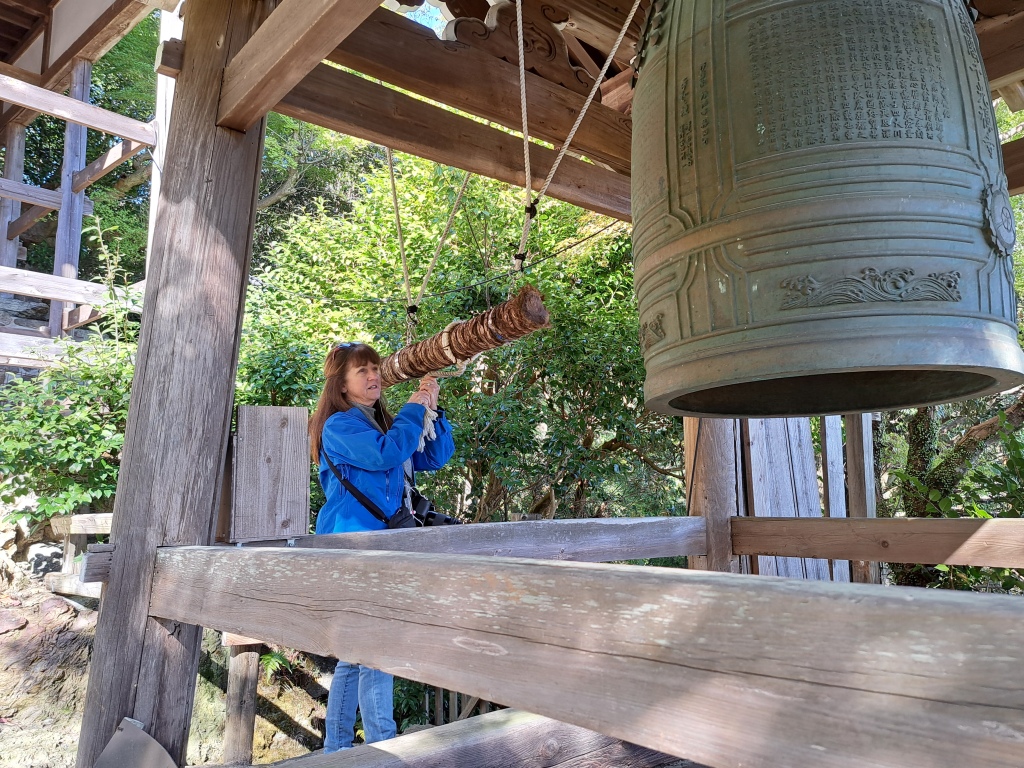

Kyoto Train Station Complex
I watched th movie “The Tereminal” a few years back about a refugee who lived in an airport terminal for 18 years. It’s based on a true story but, I would advise Karimi Nasseri to go to the Kyoto train station complex next time. There’s a hotel, an overwhelming amount of restaurants, theater and stages, a museum, sky garden, boutique stores and department stores like my favorite Isetan packed into fifteen floors of ulta-modern glass and steel designed by Hiroshi Hara ( 1936-2007). It’s so modern, that I was surprised that it was built in 1952. (truly! 71 years ago!)
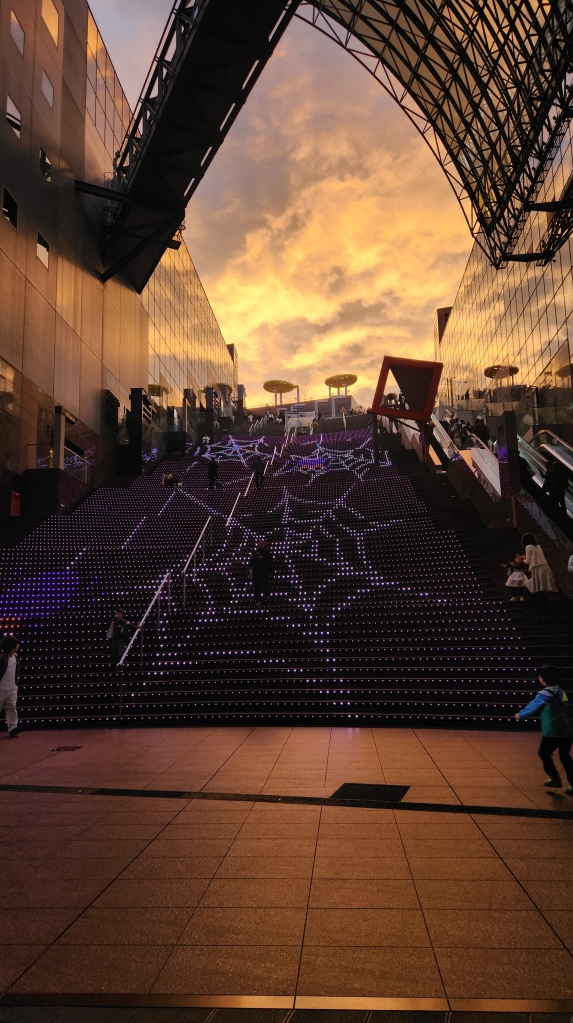
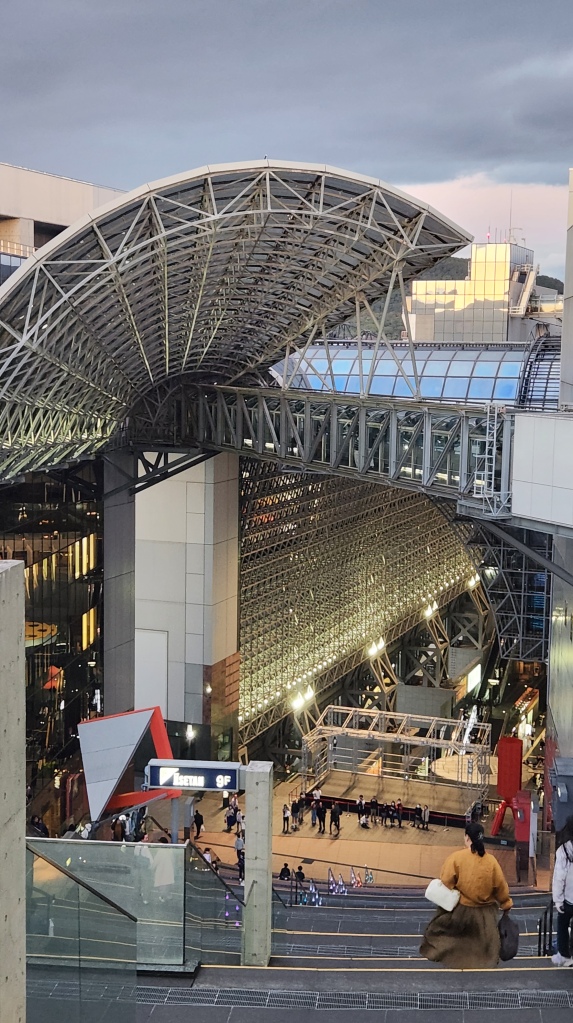


Everything and everyone connects through here from the metra, train or bus stations located in the bottom of the complex. Because it is vast with mega resources, this is a great area to stay in Kyoto.
